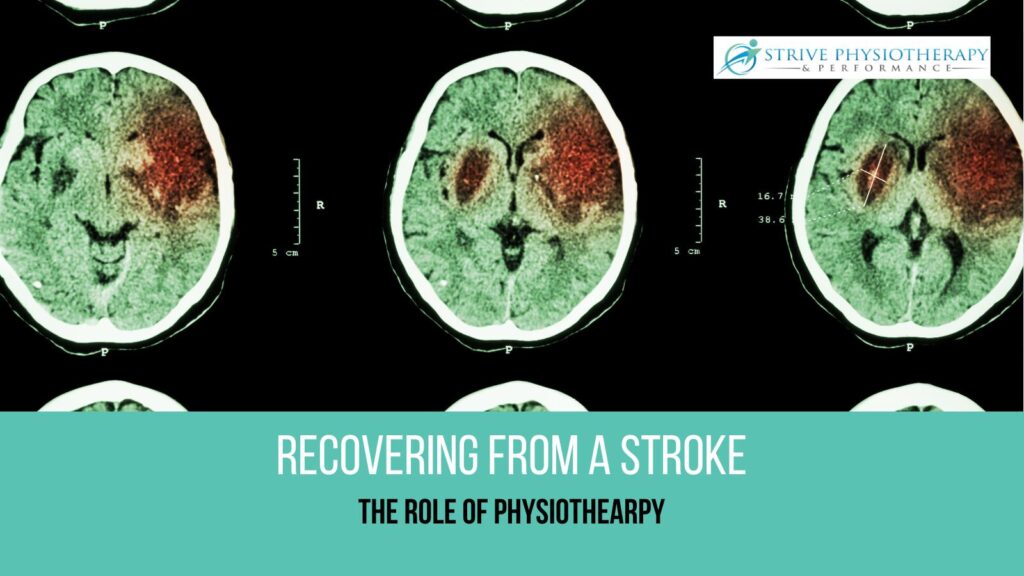
Did you know that how your stroke affects your body is dependent on the area of the brain the stroke occurred, rather than the type of stroke? A stroke can affect our movement, sensation, cognition, and/or language. So a stroke can impact the functions that a particular area of the brain is in control of.
What Is a Stroke?
A stroke is when we have a lack of blood flow to the brain resulting in damage to the brain. There are 2 types of strokes, hemorrhagic strokes and ischemic strokes. A hemorrhagic stroke is where a blood vessel in the brain ruptures. An ischemic stroke is where a clot occludes a blood vessel limiting blood flow to a part of the brain. There are a number of factors that affect one’s risk of having a stroke. Some factors that we have no control over are sex, age, family history/genetics, and comorbidities like diabetes or heart conditions. The good thing is there are many risk factors that we do have control over such as cholesterol levels, blood pressure, and diet and lifestyle factors.
What Are the Signs of a Stroke?
- Numbness or weakness in the face, arms, or legs, especially on one side of the body,
- Altered vision,
- Confusion, trouble speaking, or difficulty understanding speech,
- Dizziness, difficulty with walking, loss of balance, challenges with coordination, and/or
- A sudden severe headache with no known cause.
What Is the Role of Physiotherapy in Brain Stroke?
Depending on the location of where the stroke occurred in the brain, we can get different presentations in our body. A stroke can affect our motor, sensation, cognition, and language. Physiotherapy can address the motor impact of a stroke. Common therapy techniques include functional training, constraint-induced movement therapy, mirror therapy, coordination and balance training, and gait training.
How Long Does Physiotherapy Treatment for Stroke Take?
This will depend on where you are at in your recovery, the type/location of the stroke, the severity of the stroke and most importantly your goals. The greatest amount of recovery from a stroke takes place in the first 3 months before recovery begins to plateau. After 6 months, spontaneous recovery (natural recovery) is less common. With that being said, even in the later stages post-stroke we can still make strides with rehab. With all of that being said, you can think of physiotherapy treatment ongoing on a months-years timeline depending on the individual.
What Are the Signs of Stroke Recovery?
In physiotherapy, we often use outcome measures and tools to measure progress. You can think of these as mini-tests designed for specific populations to measure an important variable. Some commonly used ones in the stroke population are the Chedoke-McMaster Stroke Assessment (CMSA), Balance Evaluation Systems Test (BESTest), Berg Balance Scale (BBS), Clinical Outcome Variables Scale (COVS), Six Minute Walk Test, and Timed Up and Go. Significant and clinically relevant improvements in these scores indicate progress!
Can Brain Stroke Be Treated at Home?
No! If you are exhibiting any of the signs or symptoms of a stroke, immediate medical attention is needed. You must call emergency medical services and be taken to a hospital. Once medically stable, you will begin rehab.
Final Words
With proper rehabilitation, it can be possible to recover from a stroke. We can also help you with a wide range of conditions including sports injuries, repetitive strain injuries and neck pain. Call our clinic to book your appointment today.